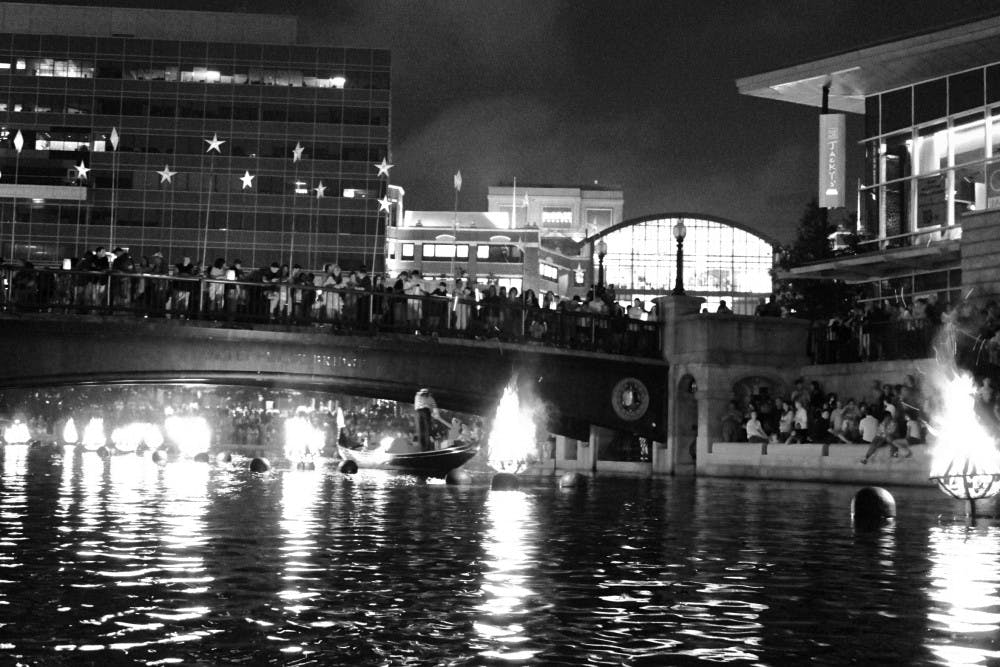WaterFire organizers are facing an urgent need to refurbish the Providence River to ensure the popular event’s longevity, but financial limitations are preventing restorative action.
“After 25 years of use and success there is now understandably a need to return our attention back to the river and the parks to make the needed refurbishments to assure another 25 years at least of further success,” WaterFire Providence wrote in an April 15 Facebook post.
Growing silt deposits in the river threaten WaterFire because event boats need at least three-and-a-half feet of water to traverse the river, according to a report on WPRI 12 Eyewitness News. The riverbed has not been dredged since its construction in 1977, and deposits have since built up the floor of the riverbed, decreasing its usable depth.
Increasingly shallow waters affect more than just WaterFire by threatening the river’s ecosystem and increasing the city’s risk of flooding. Dredging the river would also make it navigable for recreational boaters, who currently cannot dock in Providence due to the river’s low water level, said Barnaby Evans, executive artistic director of WaterFire Providence.
But preparing a dredging project would require at least a year of planning. “You’ve got to test the materials, you’ve got to figure out where it’s going to go, you’ve got to figure out how you’re going to extract it without causing damage, and it’s got to be coordinated with … biological activity in the river. So it’s not going to happen anytime soon,” Evans said.
No concrete plan to dredge the river has been put forth yet, primarily because of limited funding for the project. The dredging project is priced around $5 million, not including the additional cost of preventing future infilling of the river, said Dan Baudouin, executive director of the Providence Foundation.
The U.S. Army Corps of Engineers and the federal government carried out an analysis of the river a few years ago, and determined that the waterfront did not qualify for their funding because it is not used for commercial purposes. “The U.S. Army Corps formula does not consider the $114 million of new spending in hotels and restaurants each year that WaterFire brings into the state, because this is not a transported cargo commodity,” Evans wrote in an email to the Herald.
This puts most of the financial burden on the city and state. There have been talks between the city, state and some federal agencies, but no money has been set aside to fund the project. “It’s something that people can put off,” Baudouin said, adding that there is not an immediate sense of urgency.
A 2014 agreement with the U.S. Army Corps that allows WaterFire to request closure of the hurricane barrier during low tide ensures that the water level is kept sufficiently high, providing a temporary solution. “It helps in the interim, but ultimately, siltation is going to get worse” and more of the river bottom will be exposed during low tides, Baudouin said.
WaterFire generates $9.3 million in tax revenue for the Ocean State every year and supports almost 1,300 jobs in the city annually, according to its website. It is a platform for artists to sell their works and perform to large crowds and has become something that people identify with the city of Providence, Evans said.
“Although it does lose its novelty after the first visit, WaterFire is a very unique event that captivates sight, sound, smell, feel and taste and also offers a venue for local artists and food vendors,” said Sherry Zhang ’18. “The city should address the water issue in order to preserve this distinctive tradition.”

ADVERTISEMENT




